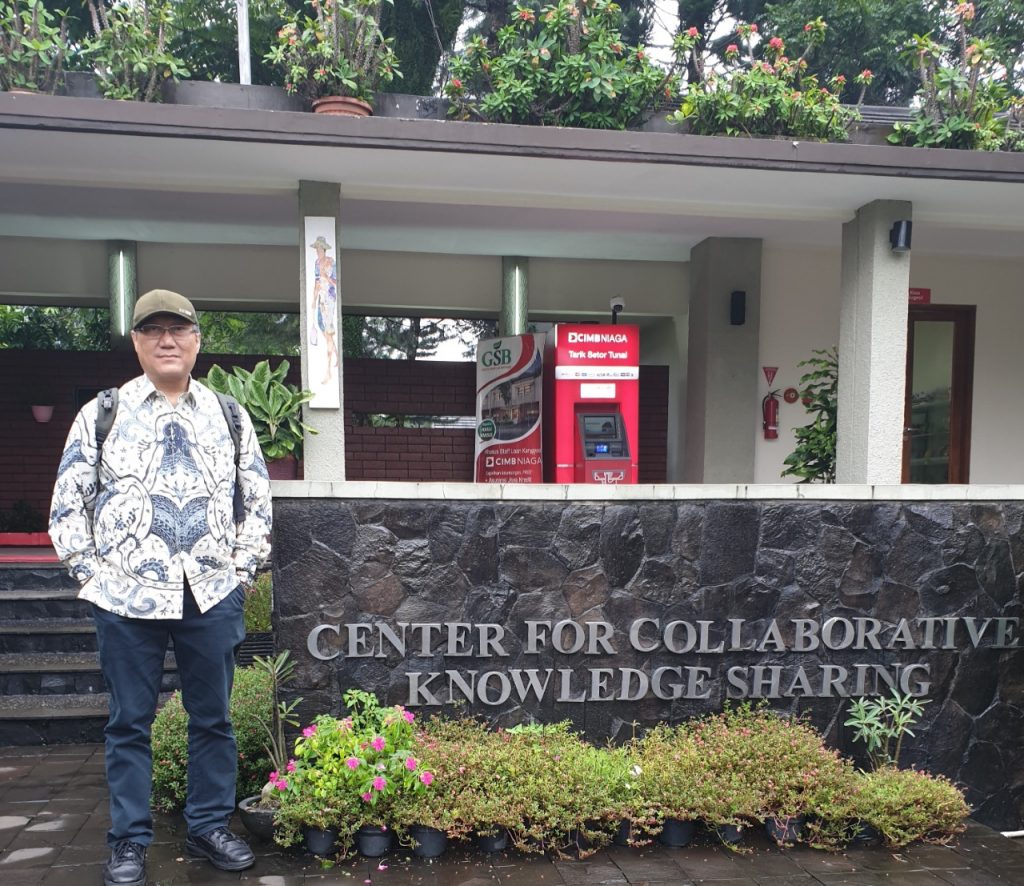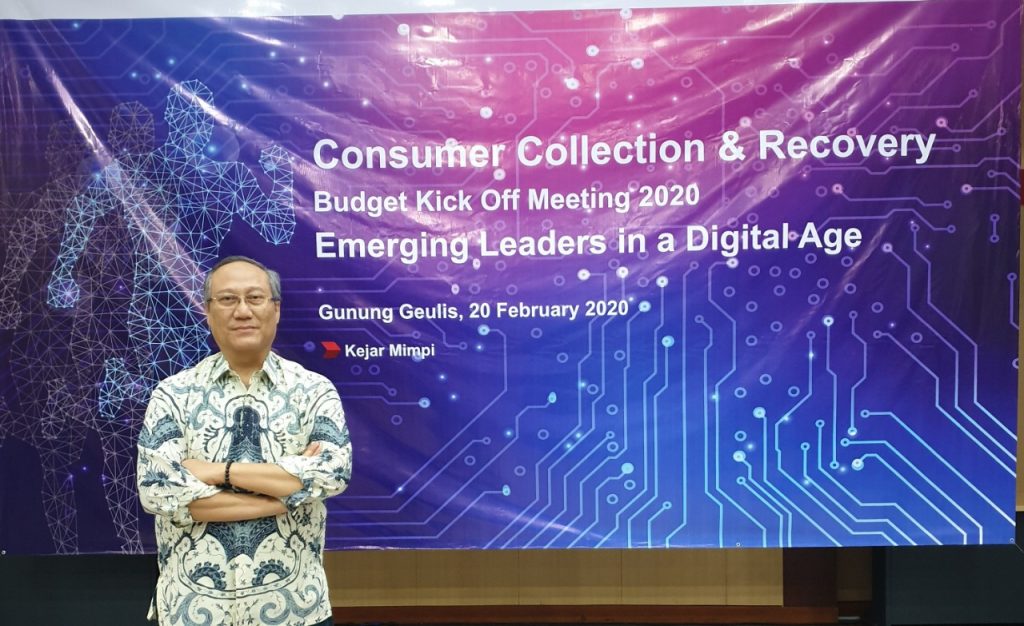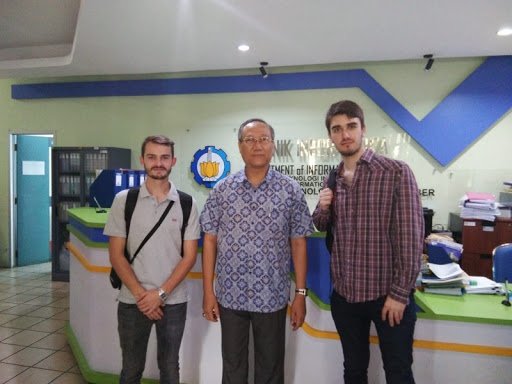Again, ITS Professor Achieves the Top 2% of World Ranking Scientists

Prof. Drs Ec Ir Riyanarto Sarno MSc Ph.D., ITS professor who is included in the Top 2% of World Ranking Scientists
ITS Campus, ITS News –Achievements for achievements continue to be demonstrated by the academics of the Institut Teknologi Sepuluh Nopember (ITS). This time, after receiving an award from the Ministry of Research and Technology / National Research and Innovation Agency (Kemenristek / BRIN), ITS professor Prof. Drs Ec Ir Riyanarto Sarno MSc Ph.D. was included in the Top 2% World Ranking Scientists.
Unmitigated, the span of his work in the world of research which has reached his 30th year since 1989, has now brought the lecturer who is familiarly called Riyan, into the ranks of the top 2 percent of scientists in the world. This is following the survey and ranking methods conducted by researchers from Stanford University, Prof. John Ioannidis, and two other researchers, Jeroen Baas and Kevin Boyack.
“Before, I didn’t expect this either. Then, a fellow lecturer from Japan told me my name was included, “he said happily. The reason is, continued Riyan, in this ranking, there is only one name of ITS research lecturer who is included in the list.
This new type of recognition was carried out by Stanford University to improve the ranking method that had previously been widely used and abused. This is as stated by John Ioannidis in his scientific publication entitled Data for Updated Science-Wide Author Databases of Standardized Citation Indicators. This was done, one of which was by grouping 22 research fields with 176 research sub-fields.

Prof. Drs Ec Ir Riyanarto Sarno MSc Ph.D., ITS professor who is included in the Top 2% of World Ranking Scientists
Besides, the trail of publications and citations is also an indicator in this ranking. Until the end of 2019, according to data compiled by John Ioannidis, this lecturer at the ITS Informatics Engineering Department has published 243 scientific articles in the field of Information and Communication Technology (ICT). His work continues to grow, until 2020 a total of 267 articles have been recorded.
According to the assessment matrix worked on by the Stanford University professor, in the field of Information and Communication Technologies, Riyan contributed the most to scientific publications in the Artificial Intelligence (AI) & Image Processing sub-field. While the second sub-field, the work of the Head of the Intelligent Information Management Laboratory, has a lot to say in the Networking & Telecommunications sub-field.
This graduate of doctoral education from the University of New Brunswick, Canada is currently developing research in the field of AI for medical purposes. “Brain surgery requires positioning with high accuracy, for that, I developed an AI to assist in positioning brain surgery in patients with Parkinson’s, tumors, and strokes to help medical personnel,” he said.
Before his latest work appeared, the matrix on which the Top 2% World Ranking Scientist was ranked, also opened traces of Riyan’s citation in the past year. “At the end of 2019, I recorded 196 cited works and had an H-index value of 19,” he explained. He also added that currently he already has an H-index 21 thanks to additional publications related to the latest research.
The lecturer, who also won first place in the Scopus ranking some time ago, shared his motivation in efforts to intensify research. It is not only intended to increase the publication of scientific works. More than that, according to him, as a human being involved in the world of education, he must be able to leave his work. “Not only works that can be continuously researched, but also beneficial for mankind,” he reminded.

Prof. Drs Ec Ir Riyanarto Sarno MSc Ph.D. (center) with international students at the ITS Informatics Engineering Department
Indeed, from the same cage, he was alone. However, he is quite proud of Indonesia’s achievement in this ranking. Although, the numbers are still far from developed countries and some neighboring countries, in the Top 2% list of World Ranking Scientists 42 names of scientists from Indonesia are listed. “We see Malaysia donating 388 names, furthermore there are Japan with 4,483 names, India 9,104 names, and China 12,948 names,” he added.
Riyan said that he is proud of this, of course without forgetting the mandate to immediately clean up. From his perspective, this backwardness is a motivation to improve the research environment and academic environment in Indonesia, which still needs a lot of improvement. “In selecting textbooks for teaching materials, for example. Let us fix it, not only based on old research products, “he asked.
According to Riyan, it is time to show students the novelty of scientific articles that the lecturers have written themselves. That way, he hopes that he will build a better research atmosphere and be able to create innovative traits in students and young researchers in Indonesia. “So, Indonesia will be catching up with and more research institutions will contribute names,” he hoped.
Apart from ITS, the list of other agencies that contributed to this ranking is the Indonesian Institute of Sciences (LIPI), AMCS Research Center, UI, ITB, UGM, IPB, Undip, Unhas, USU, and UNICEF Indonesia. (qaf/ris/ITS Public Relations)
Related News
-
ITS Collaboration with BPBD East Java, Launching VR Disaster Simulation
ITS Campus, ITS News — Supporting anticipation of disasters and continuing to educate the public, Institut Teknologi Sepuluh Nopember
November 22, 2020 13:11 -
Supporting the Implementation of Innovative Ideas, ITS and IYSA Hold International Competition
ITS Campus, ITS News — Institut Teknologi Sepuluh Nopember (ITS) has once again proven its commitment to supporting the
November 22, 2020 13:11 -
ITS Maintains Informative Qualification for Five Consecutive Years at KIP Awards
ITS Campus, ITS News — Institut Teknologi Sepuluh Nopember (ITS) has once again successfully maintained its Informative Qualification predicate
November 22, 2020 13:11 -
ITS Strengthens Smart Eco-Campus through UI GreenMetric 2024
ITS Campus, ITS News — Institut Teknologi Sepuluh Nopember (ITS) has once again demonstrated its commitment to environmental concern
November 22, 2020 13:11
